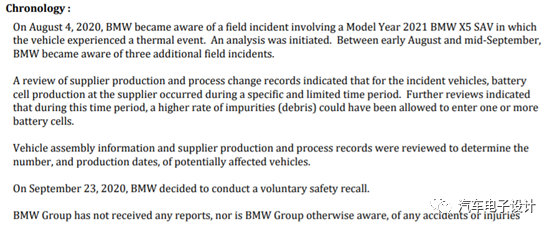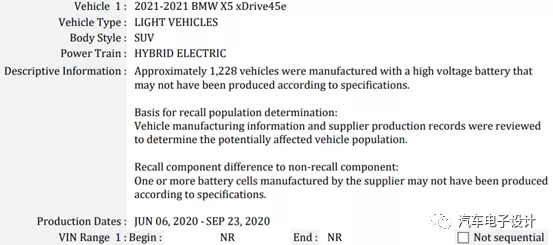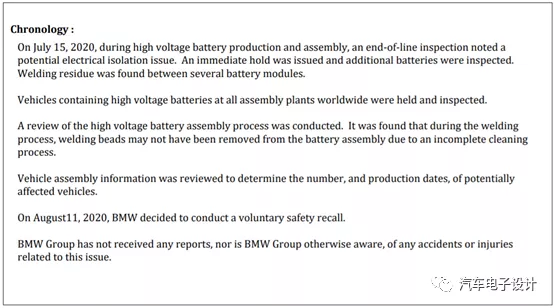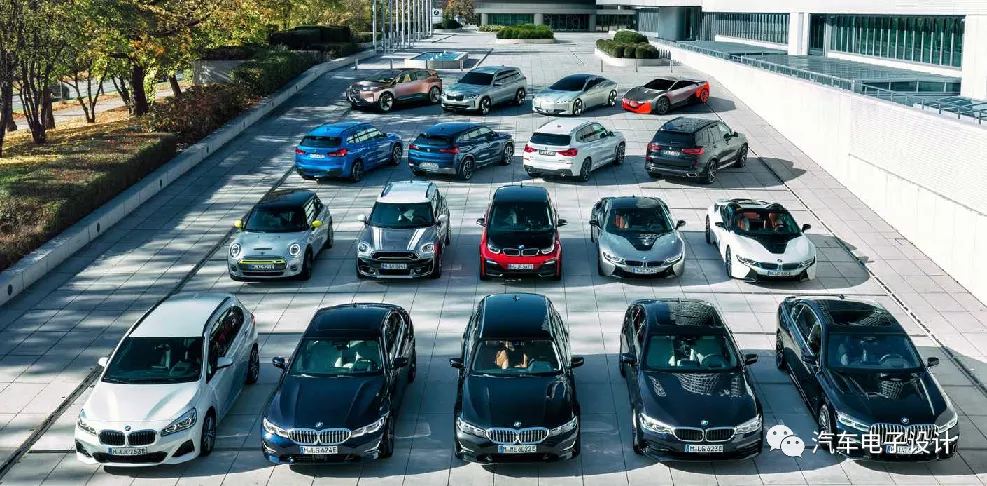Introduction
According to the information released by the NHTSA in the United States, the problem is further directed towards some battery cell issues, which is different from the previous description. It has been found that there may be a high proportion of impurities in the production and process adjustment of the battery cell, from soldering flux to battery cell production and process adjustments. BMW admitted in the document that there were indeed four cars that caught fire.
U.S. Transportation Data
1) Part 573 Safety Recall Report 20V-601 released on September 30
It is described as such, from this perspective, the impact of the fire is huge. So, on the one hand, BMW identifies the need for recall from its own work perspective, and on the other hand, from the differences between supplier process and process change review, which is considered important.

It involves almost all PHEVs. The basic description is that some battery cells are not produced according to BMW’s requirements.

The battery cell supplier is Samsung SDI.

It should be noted that these are two recalls of different scopes, and even BMW cannot currently determine whether they need to be handled simultaneously. I feel that this is a process of retracing. Previously discovered Part 573 Safety Recall Report 20V-490

2) Part 573 Safety Recall Report 20 V-490
This was released on September 2, which is related to the problem in the module welding process unrelated to the battery cell.

In this previous description, potential insulation problems were discovered through EOL inspections, and it was inferred that there may have been issues in the past.

Unemployment NumbersAfter reaching the phase conclusion, European customers will further pay attention to existing suppliers SDI and LG Chem. To put it differently, the previous trend of mass usage of Korean battery cells in Europe will accelerate to break. Several European car enterprises will advance the process of cultivating suppliers. As a matter of fact, this scene can be seen:
1) It is necessary to maintain 2-3 battery suppliers in one region, as the case of Ford’s KUGA PHEV recall, unable to meet carbon emissions requirement and need to deal with jointly calculated, was painful.
2) Currently, Chinese battery suppliers are likely to have more opportunities in Europe than previously thought. The transfer of orders is expected to be evaluated in 2022, but it may now be expedited to 2021. Of course, according to the European car enterprises’ investigation methods for problems that occurred in the previous period, the probable profound influence on the iteration of the next stage of cell chemical system is expected, since now they are entering a period of NCM 811 application. If impurities have such a significant effect on PHEV’s low energy density cells, it can be foreseen that impurities will have a greater impact on BEV cell vehicle models.
In fact, when vehicles are widely used in Europe, just similar to what happened in China before, there will be issues. However, the tolerance for such low probability events from European car enterprises and regulatory authorities is very low, so there will be a process.
Summary
To be honest, the current investigation results do not mean that the domestic situation is much better than that in Europe. Only, in terms of information disclosure, European car enterprises are more sufficient, and we can understand others’ issues from official channels. For the rapid growth of the industry, high energy density, low cost, and large-scale deployment, it is impossible to completely eliminate low probability thermal failure in the short term. There is no safety myth to make power batteries.
This article is a translation by ChatGPT of a Chinese report from 42HOW. If you have any questions about it, please email bd@42how.com.
